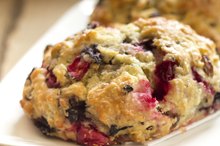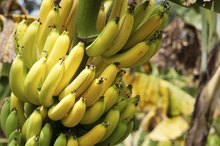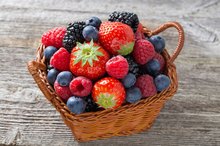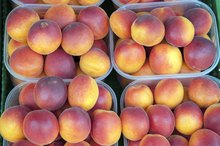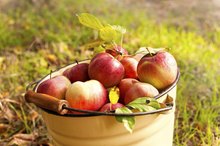Is No-Sugar-Added Dried Fruit Good for You?
Dried fruit makes a great snack or an addition to any meal — add it to your cereal, sneak some into a gourmet salad or create a trail mix with some crunchy nuts. But if you want to avoid unnecessary calories, it’s important to select dried fruit with no sugar added.
Tips
Yes, dried fruit with no sugar added is good for you, but you should still watch your portion sizes.
Read more: 5 Health Benefits of Dried Fruit That Make It a Smarter Snack Choice
Dried Fruit vs. Fresh Fruit
The Produce for a Better Health Foundation dispels the notion that fresh fruit is necessarily healthier for you than dried fruit. Although dried fruit has a reputation for having more calories and sugar than fresh fruit, that’s only because dried fruit is concentrated.
Think about it this way: When fruit is dried and loses its moisture content, it becomes much smaller. A low volume of dried fruit will have the same calories and sugar content as a much larger volume of fresh fruit. But as long as you manage your portion sizes and opt for dried fruit with no sugar added, then that fruit is just as good for you as fresh fruit.
Just how do dried fruit and fresh fruit compare as far as portion sizes go? The USDA explains that 1/4 cup of dried fruit is equal to 1/2 cup of fresh fruit, and both count as one serving from the fruit group.
Harvard Health Publishing provides a great example, illustrating why dried fruit has more calories and sugar than fresh fruit: It may be unlikely that an individual would eat 30 grapes in one sitting, but eating 30 raisins would be easy. However, despite their compact volume, those 30 raisins are nutritionally the same as those 30 grapes.
Read more: Are Raisins Bad for a Weight Loss Diet?
Choose Dried Fruit With No Sugar Added
What Is the Percentage of Sugar in Dried Fruits?
Learn More
While portion control is important when you’re enjoying dried fruit, it’s just as important to make sure you’re not snacking on dried fruit that has a lot of added sugar.
Harvard Health Publishing notes that fruit already has natural sugar, but some manufacturers sweeten dried fruits even more with added sugar. Therefore, it’s important to check the nutrition label or ingredient list — the dried fruit will still have lots of fiber and antioxidants, but the added sugar might offset those health benefits.
In fact, a July 2017 article in Nutrients differentiates between traditional dried fruits and those that are dried with added sugar. Fruits such as apples, apricots, currants, dates, figs, peaches, pears, prunes and raisins are fruits that you will often find dried with no sugar added. However, fruit such as strawberries, cranberries, blueberries, cherries and mangoes are often infused with a sugar solution or fruit juice concentrate before they are dried.
Because of this added sugar, these types of dried fruits would not fall into the same category as dried fruit with no sugar added, which are considered a healthy snack alternative to foods that are salty or sugary. The review concludes that dried fruit with no sugar added can be used to counteract Type 2 diabetes and other metabolic diseases — an impressive health benefit.
But it’s not just the dried fruit you need to watch out for when it comes to added sugar. The USDA recommends avoiding added sugar in any packaged fruit product, whether that’s fruit that has been canned in syrup or applesauce made with added sugar.
Read more: 15 Reasons to Kick Sugar


